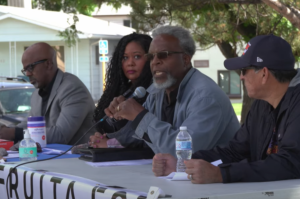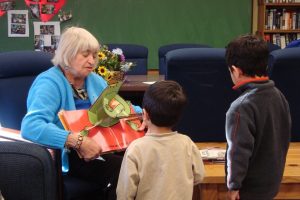The first concept that resonated with me was during the module 3 lecture when I heard the words “hyperlinks are people too” (n.d., 37:24). Libraries were once a place for individual research, but they have evolved into a place of learning through collaboration, connection, and community. This idea began to blossom for me during module four when I was introduced to the idea of libraries as a necessary piece of social infrastructure. Social infrastructure is both the physical spaces and services that serve as the foundation for a community’s social health. Eric Klinenberg says that “when social infrastructure is robust, it fosters all kinds of social interactions, helps build relationships, and turns community from a vague, fuzzy concept into a lived experience” (2018). I think of the idea of libraries as social infrastructure as twofold. On the one hand, libraries are free and unbiased physical spaces where people can gain and share ideas. On the other, libraries should be collaborating with community partners to implement social programs that benefit library users.

Mesa County Libraries in Fruita, Colorado hosted a panel discussion with local activists to participate in dialogue and answer questions. Photo courtesy of Knology.
Libraries are a vital physical space for communities to collaborate and create. Though people still utilize the library as spaces for solitary research, they are more often viewed as community centers. Libraries are one of the only free spaces for people to gather (O’Brien, 2019). Free spaces are truly accessible to all, regardless of socioeconomic status. In addition to being free, they are unbiased. Many free spaces are part of organizations that have agendas; even if a user agrees with the agenda, they are often still biased. Libraries aim to create a space where people can come together to respectfully discuss different ideas and opinions. An obstacle that can stand in the way of libraries being an effective public space is the limitations of utilizing what is available. Building new rooms is not a cost efficient or plausible option for many libraries, to say nothing of the disruption that construction projects cause. What is the best way to utilize existing spaces to promote connections? Each library space and patron base is unique, so there is no one way to organize a space; perhaps though, there is a strategy or guidelines that each unique library can utilize.

Darien Library puts on an intergenerational program where they collaborate with the local senior center. Older adults read to young children. Photo by Claire Moore.
The services the library provides should be diverse and all encompassing of the patronage it serves. Through my MLIS career and current position as a library assistant, it has always been instilled in me to advocate for marginalized communities by ensuring they are served and represented. However, it is important to serve all other patron groups in the library as well. Libraries are social infrastructure that both serves and needs the participation of all community members from marginalized groups to the otherwise enfranchised (Mattern, 2014). This idea does face the challenge that libraries often have a limited amount of resources; therefore, they cannot put on programs and display materials that represent every single intersection of every single person. I believe the notion that hyperlinks are people can help with this. Instead of finding a material that represents the complexities of each identity, we can find materials that encompass the identities of as many folks as possible and emphasize our connections. We can provide programs for specific groups as well as intersectional programs that encourage community.
References
Klinenberg, E. (2018, Sepetember 11). How ‘Social Infracstructure’ Can Knit America Together. Bloomberg. https://www.bloomberg.com/news/articles/2018-09-11/our-libraries-and-schools-are-vital-social-infrastructure
Mattern, S. (2014). Library as Infrastructure, Places Journal. https://doi.org/10.22269/140609
O’Brien, C. (2019, June 24). How San Fancisco’s public libraries nare embracing their changing role. Shareable. https://www.shareable.net/how-san-francisco-public-libraries-are-embracing-their-changing-role/
Stephens, M. (n.d.) “Historic” Hyperlinked Library Model [Video]. Panopto. https://sjsu-ischool.hosted.panopto.com/Panopto/Pages/Viewer.aspx?id=a0569381-4d66-4e0a-a7fa-aab3010a8f3e
